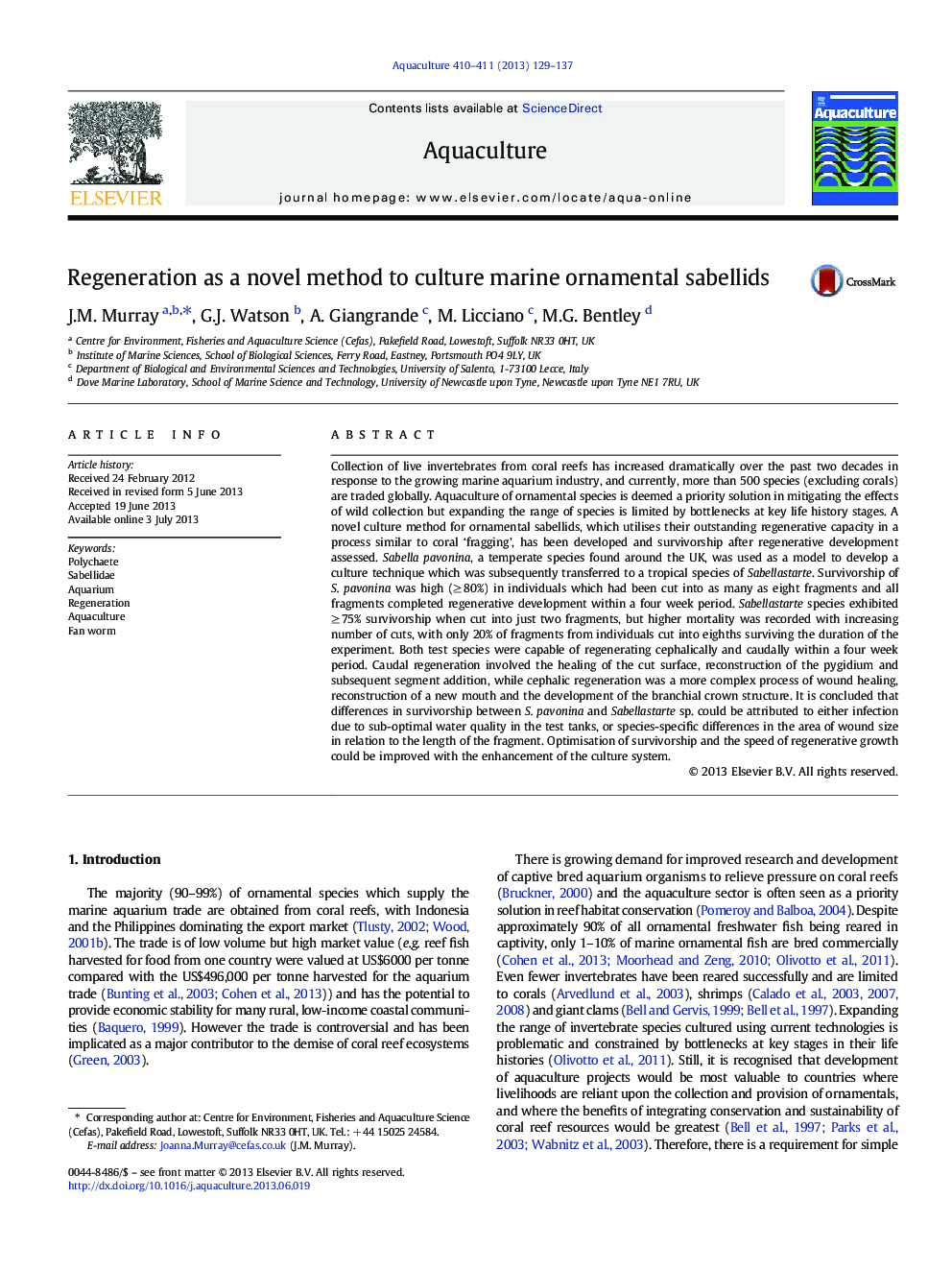| کد مقاله | کد نشریه | سال انتشار | مقاله انگلیسی | نسخه تمام متن |
|---|---|---|---|---|
| 2422100 | 1552868 | 2013 | 9 صفحه PDF | دانلود رایگان |

• Regeneration is tested as a novel method to culture marine ornamental sabellids.
• Survival rates of species of Sabellastarte cut in half exceed 75%.
• Surviving worms can complete both caudal and cephalic regeneration in four weeks.
• The method would be most suited to small-scale aquaculture in source communities.
Collection of live invertebrates from coral reefs has increased dramatically over the past two decades in response to the growing marine aquarium industry, and currently, more than 500 species (excluding corals) are traded globally. Aquaculture of ornamental species is deemed a priority solution in mitigating the effects of wild collection but expanding the range of species is limited by bottlenecks at key life history stages. A novel culture method for ornamental sabellids, which utilises their outstanding regenerative capacity in a process similar to coral ‘fragging’, has been developed and survivorship after regenerative development assessed. Sabella pavonina, a temperate species found around the UK, was used as a model to develop a culture technique which was subsequently transferred to a tropical species of Sabellastarte. Survivorship of S. pavonina was high (≥ 80%) in individuals which had been cut into as many as eight fragments and all fragments completed regenerative development within a four week period. Sabellastarte species exhibited ≥ 75% survivorship when cut into just two fragments, but higher mortality was recorded with increasing number of cuts, with only 20% of fragments from individuals cut into eighths surviving the duration of the experiment. Both test species were capable of regenerating cephalically and caudally within a four week period. Caudal regeneration involved the healing of the cut surface, reconstruction of the pygidium and subsequent segment addition, while cephalic regeneration was a more complex process of wound healing, reconstruction of a new mouth and the development of the branchial crown structure. It is concluded that differences in survivorship between S. pavonina and Sabellastarte sp. could be attributed to either infection due to sub-optimal water quality in the test tanks, or species-specific differences in the area of wound size in relation to the length of the fragment. Optimisation of survivorship and the speed of regenerative growth could be improved with the enhancement of the culture system.
Journal: Aquaculture - Volumes 410–411, 10 October 2013, Pages 129–137